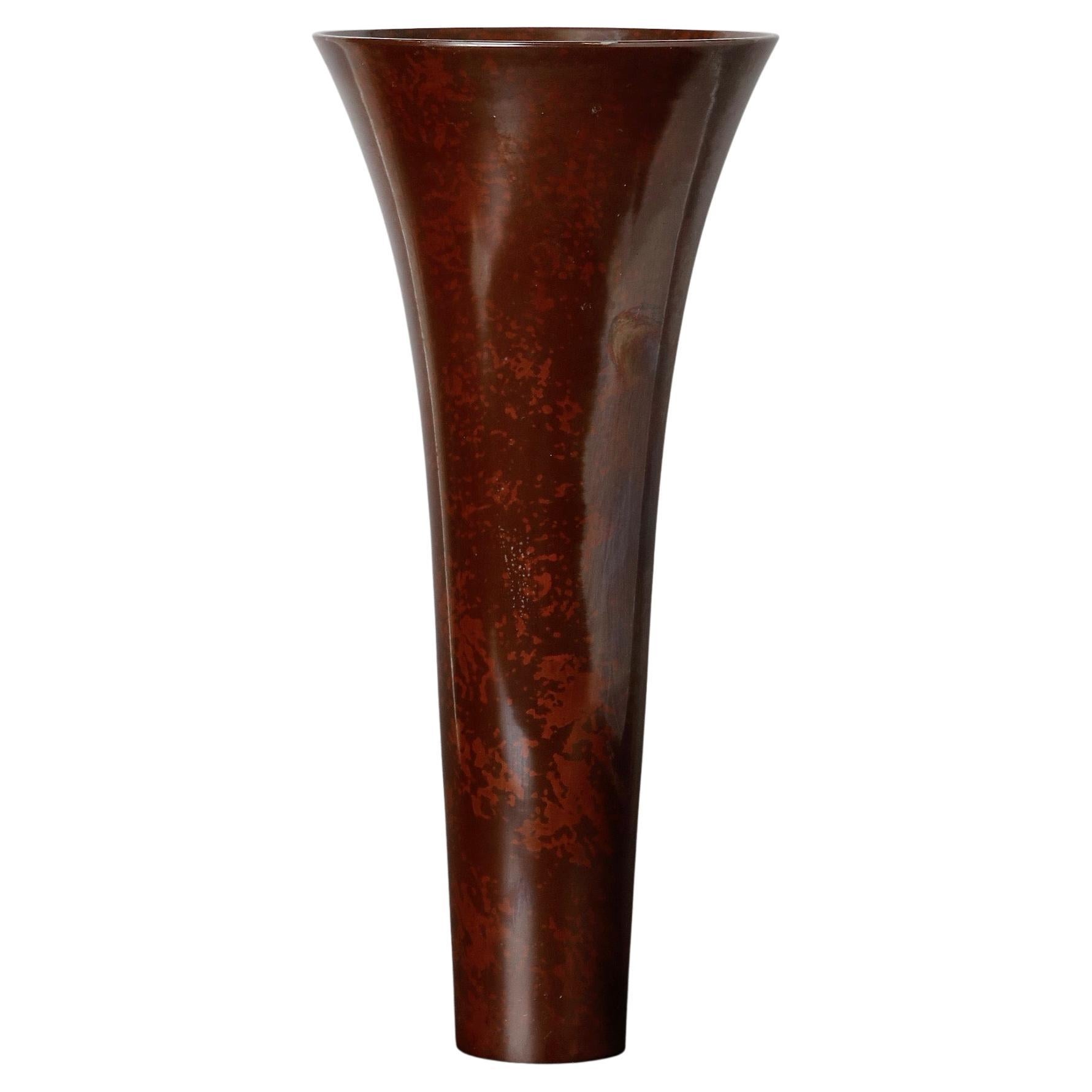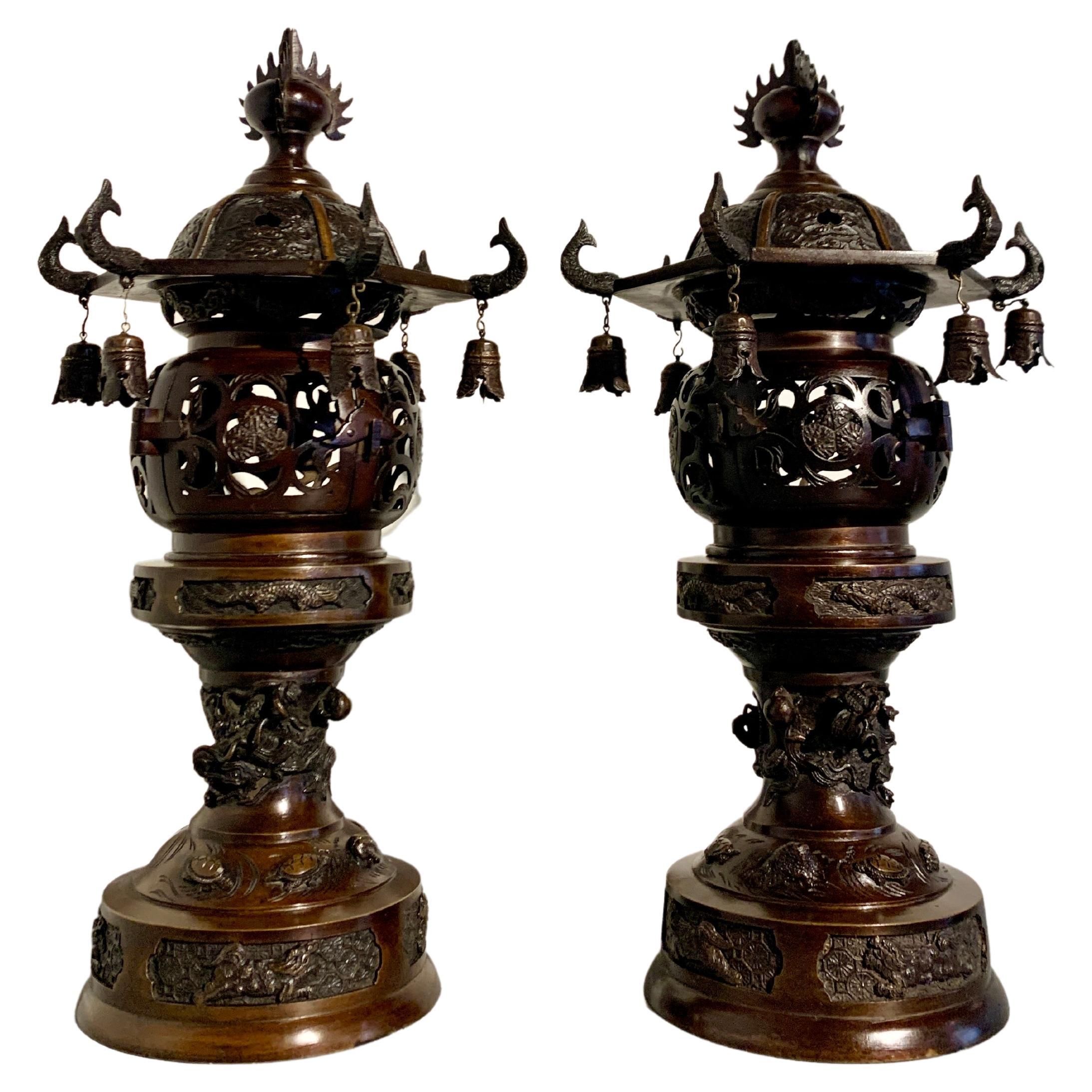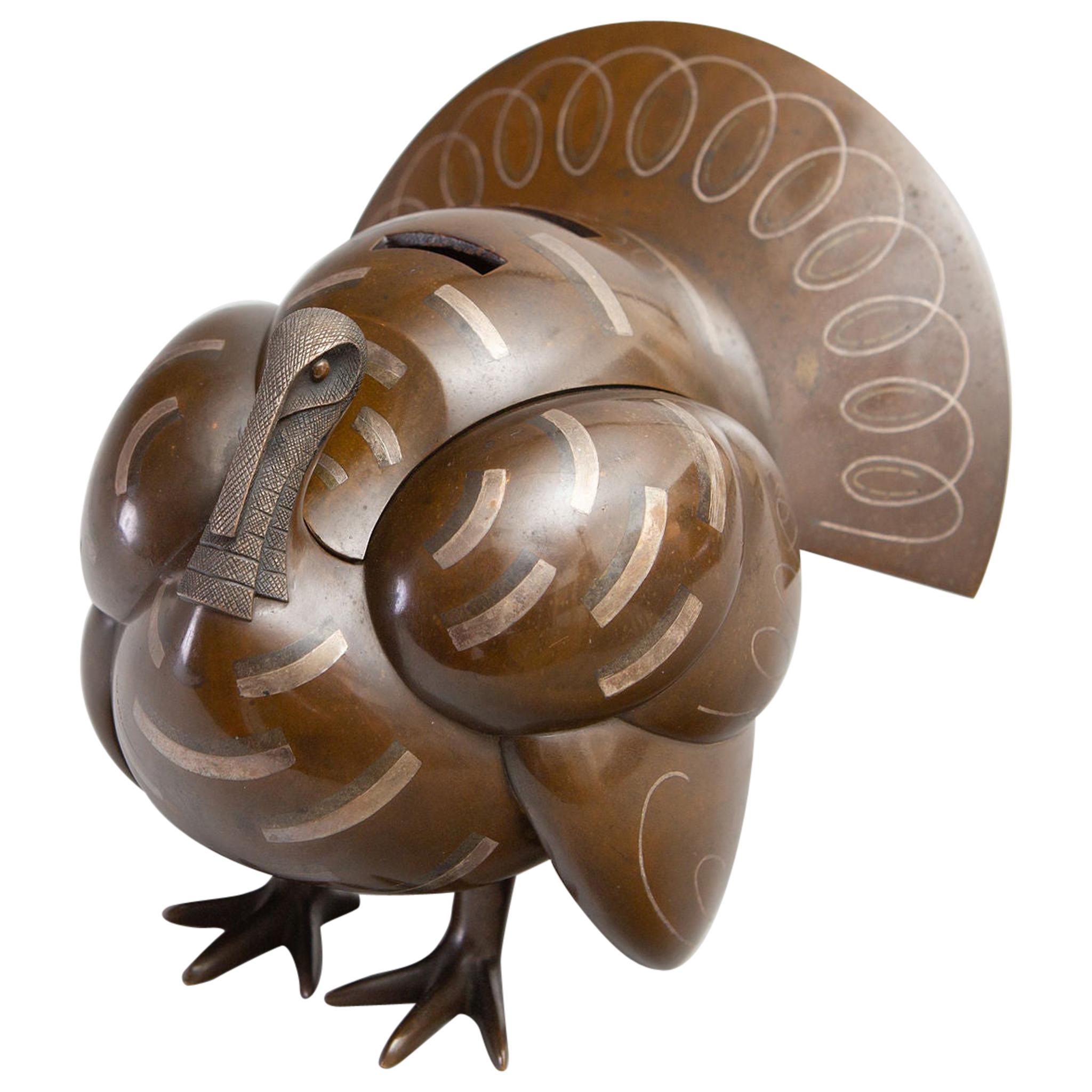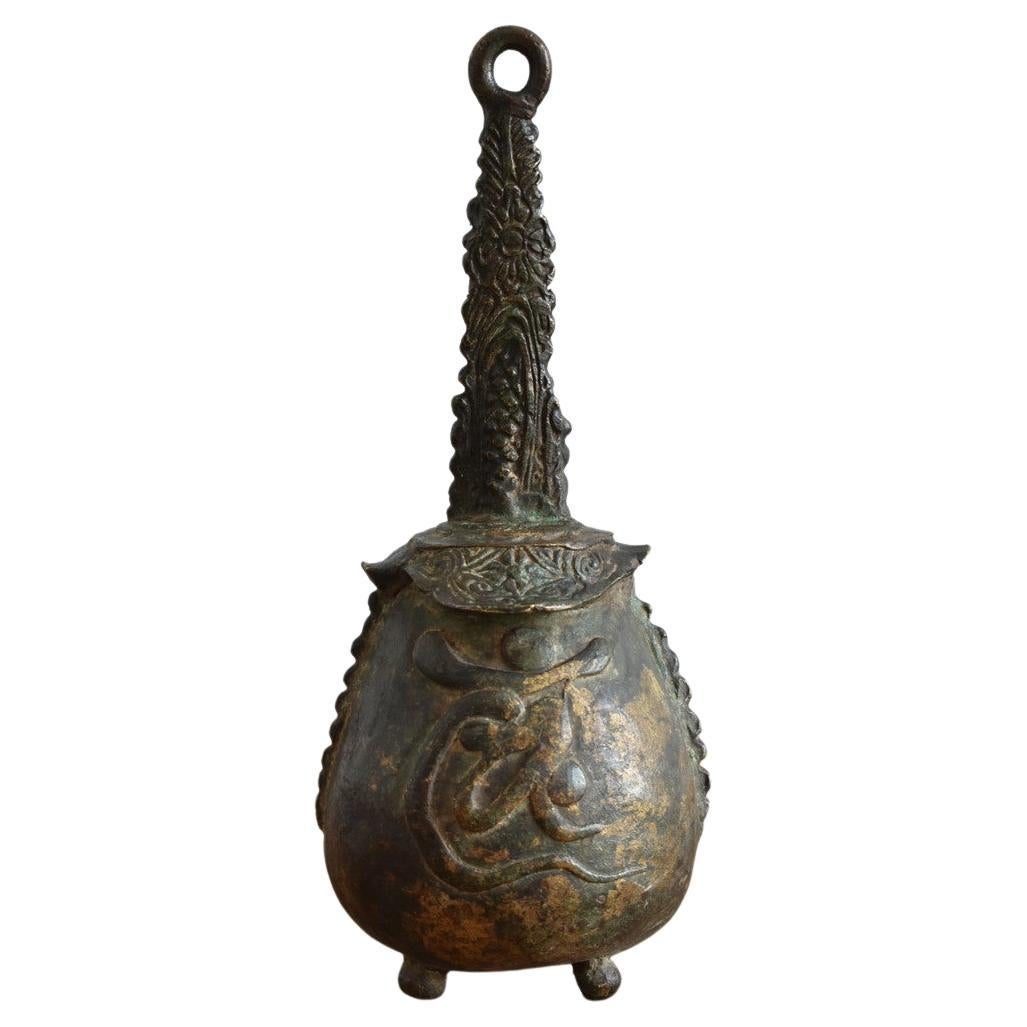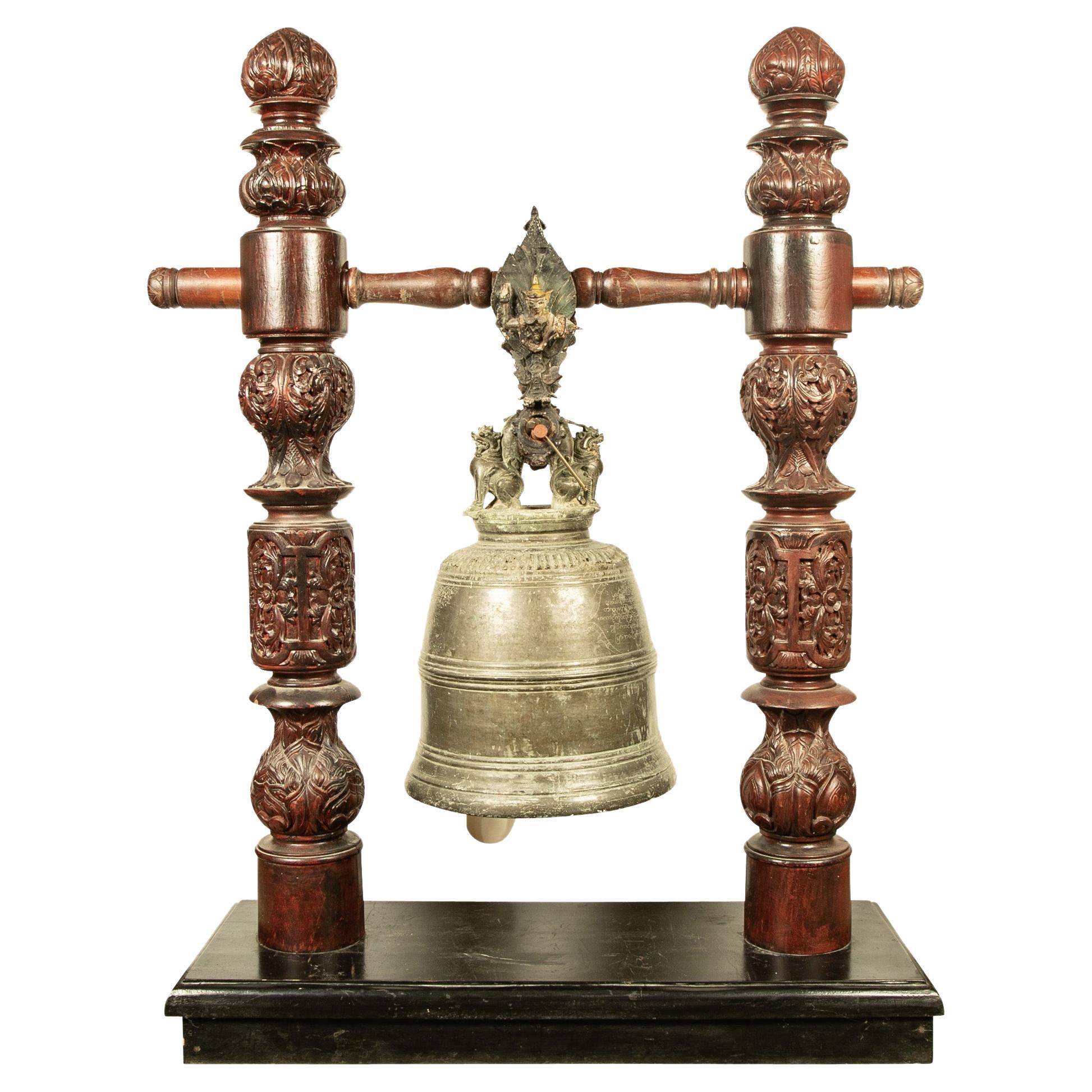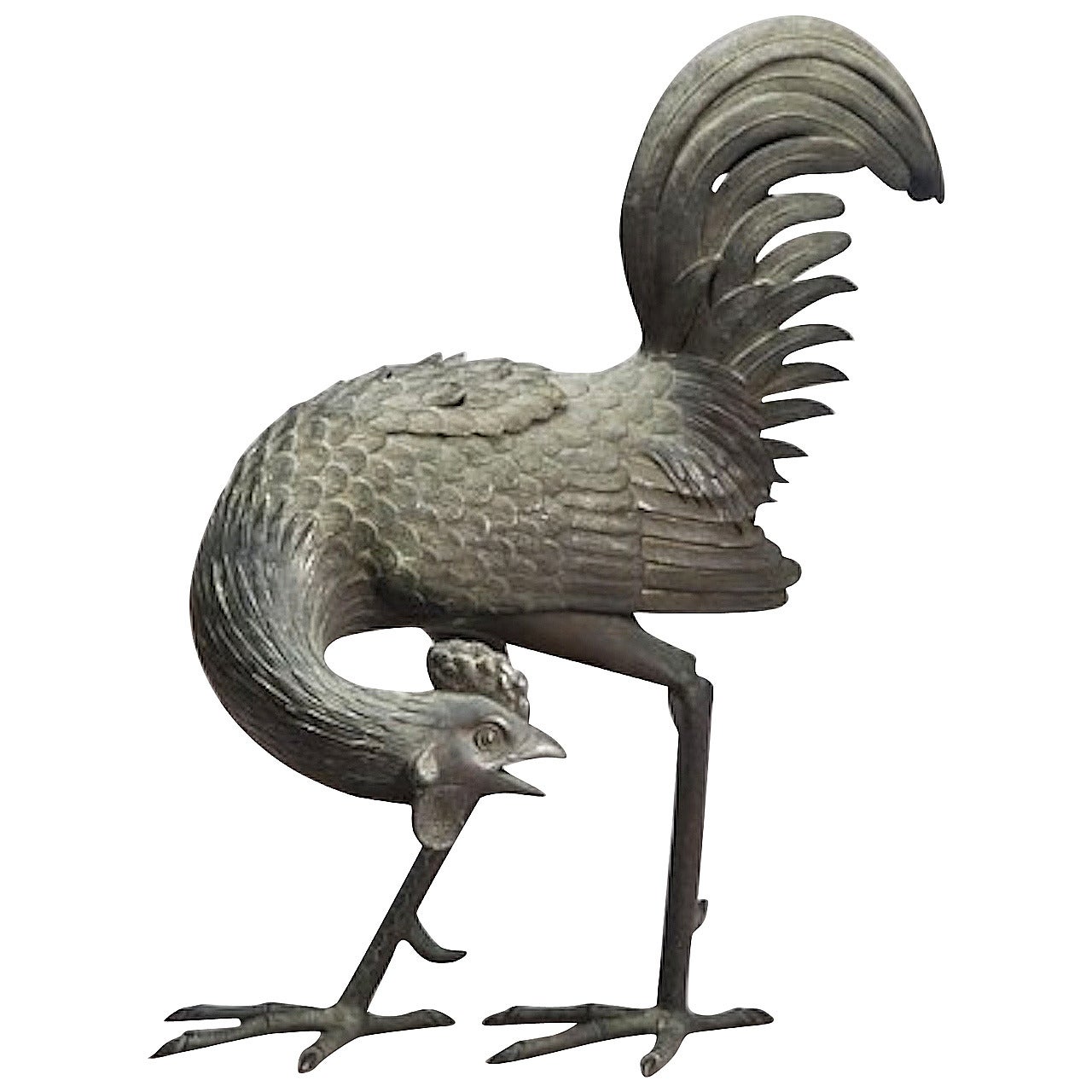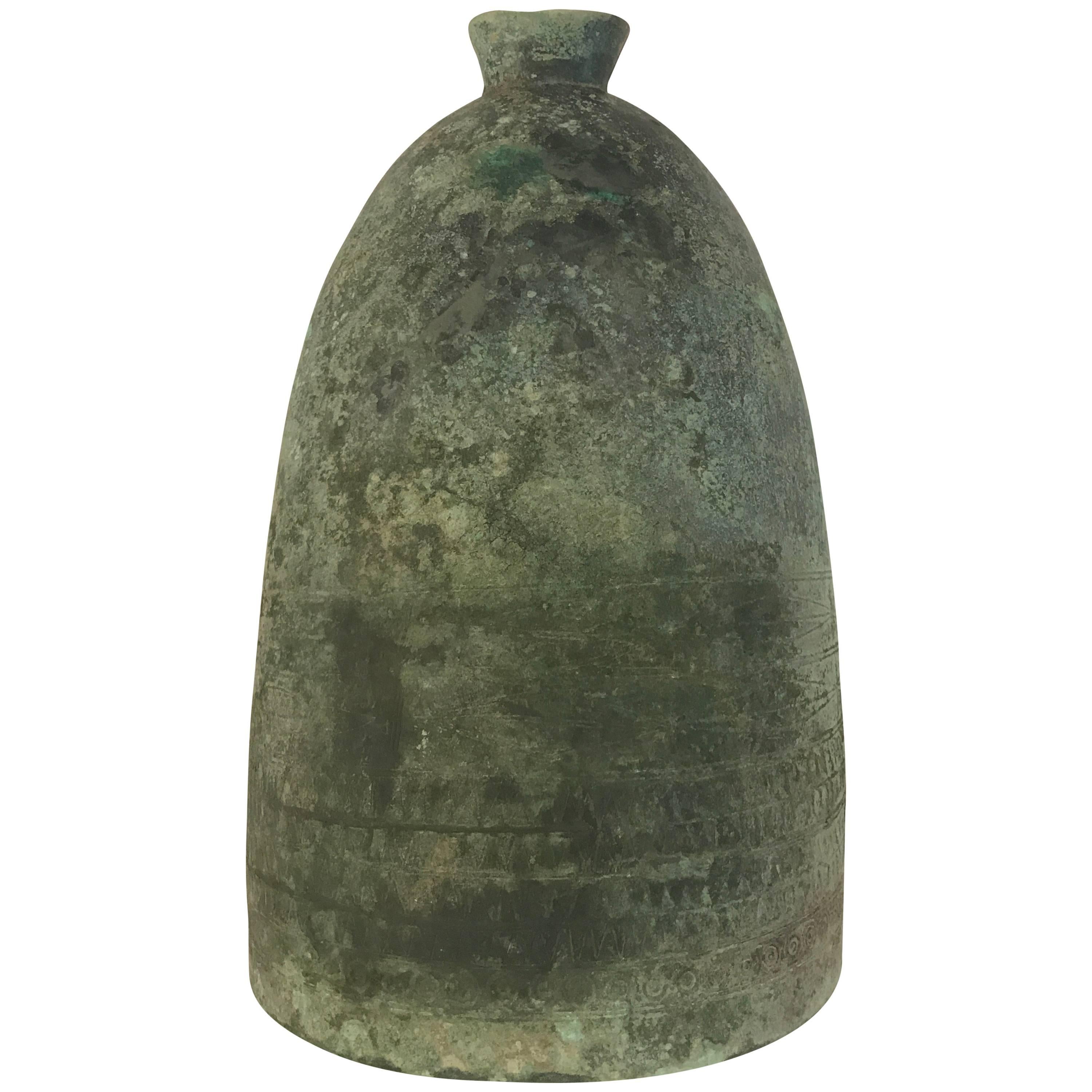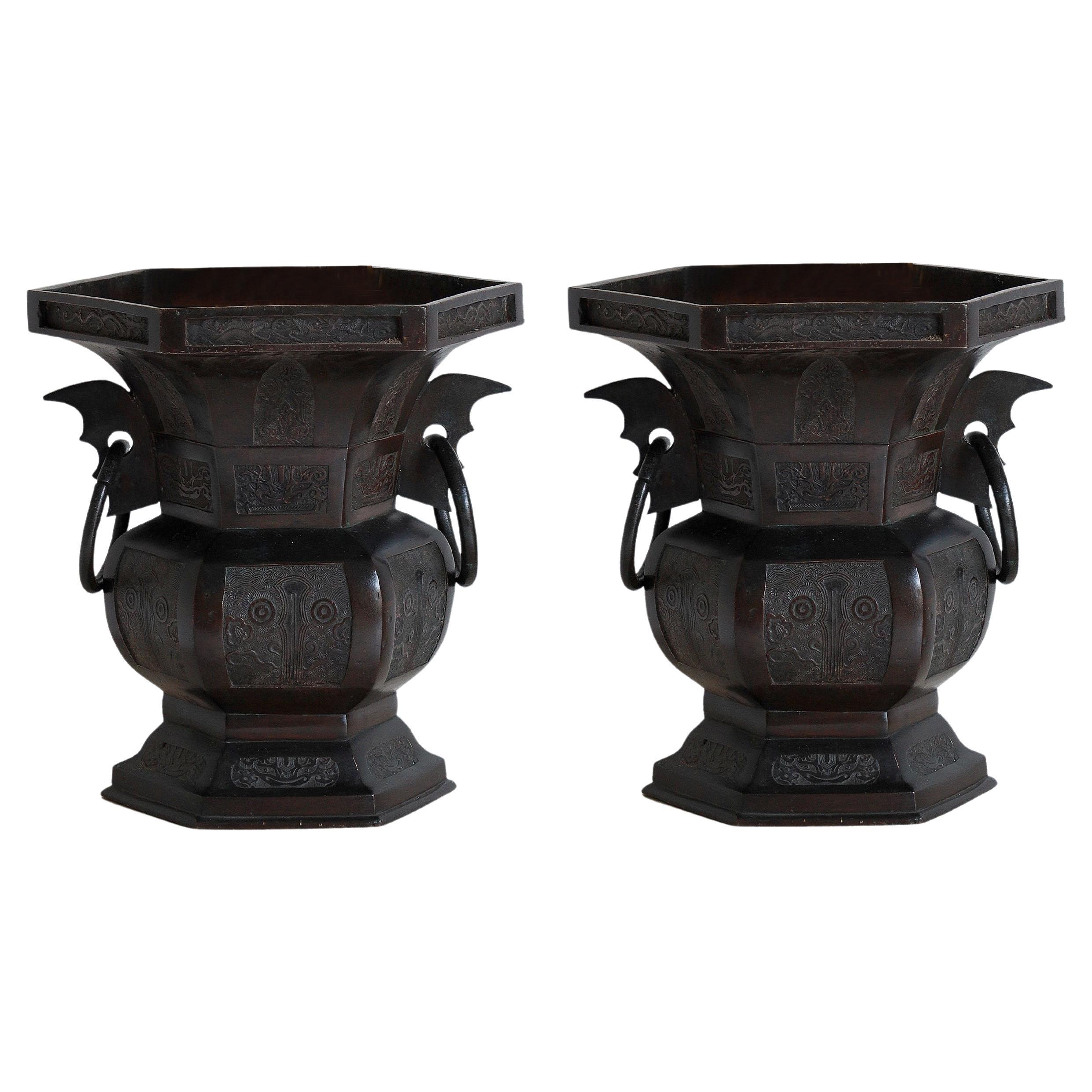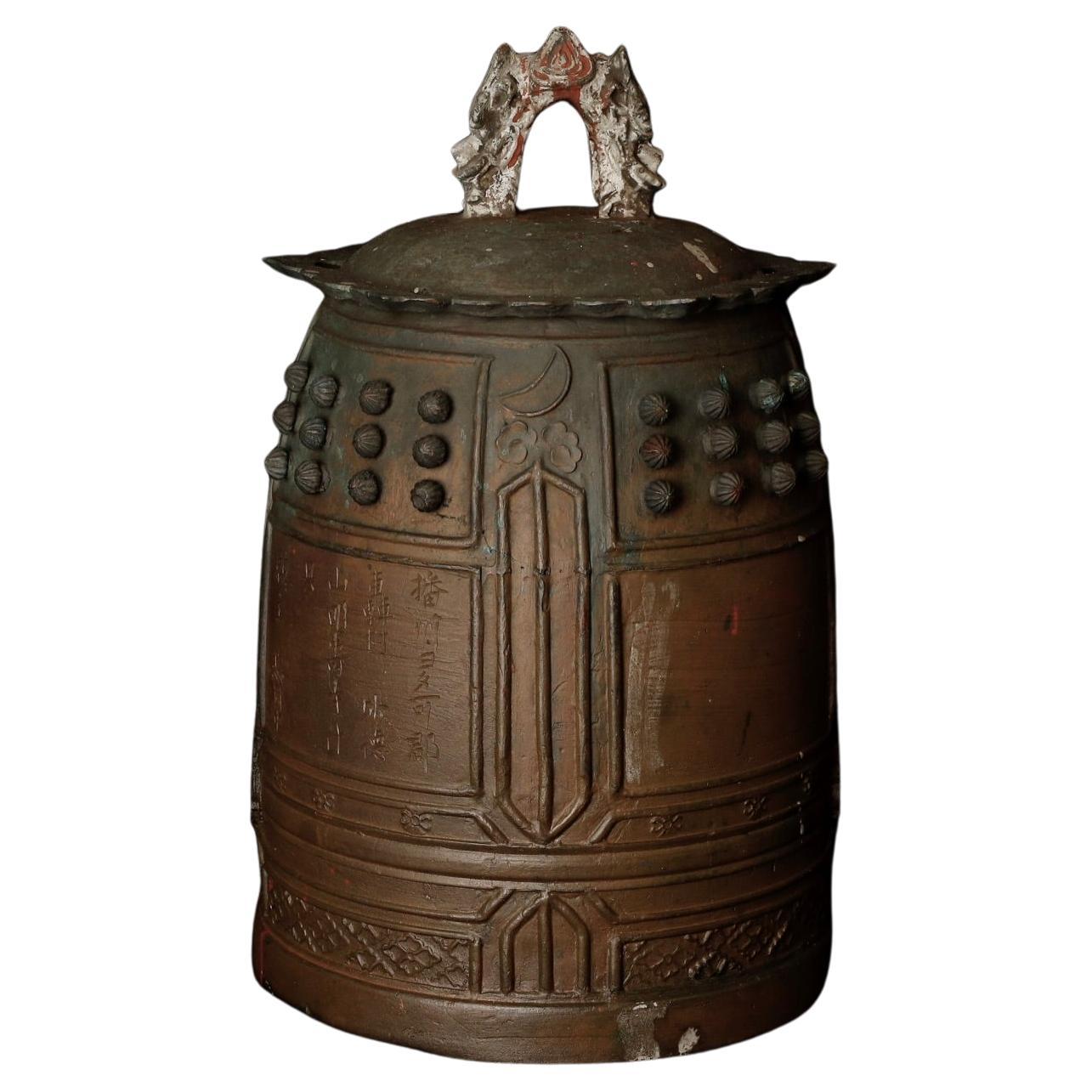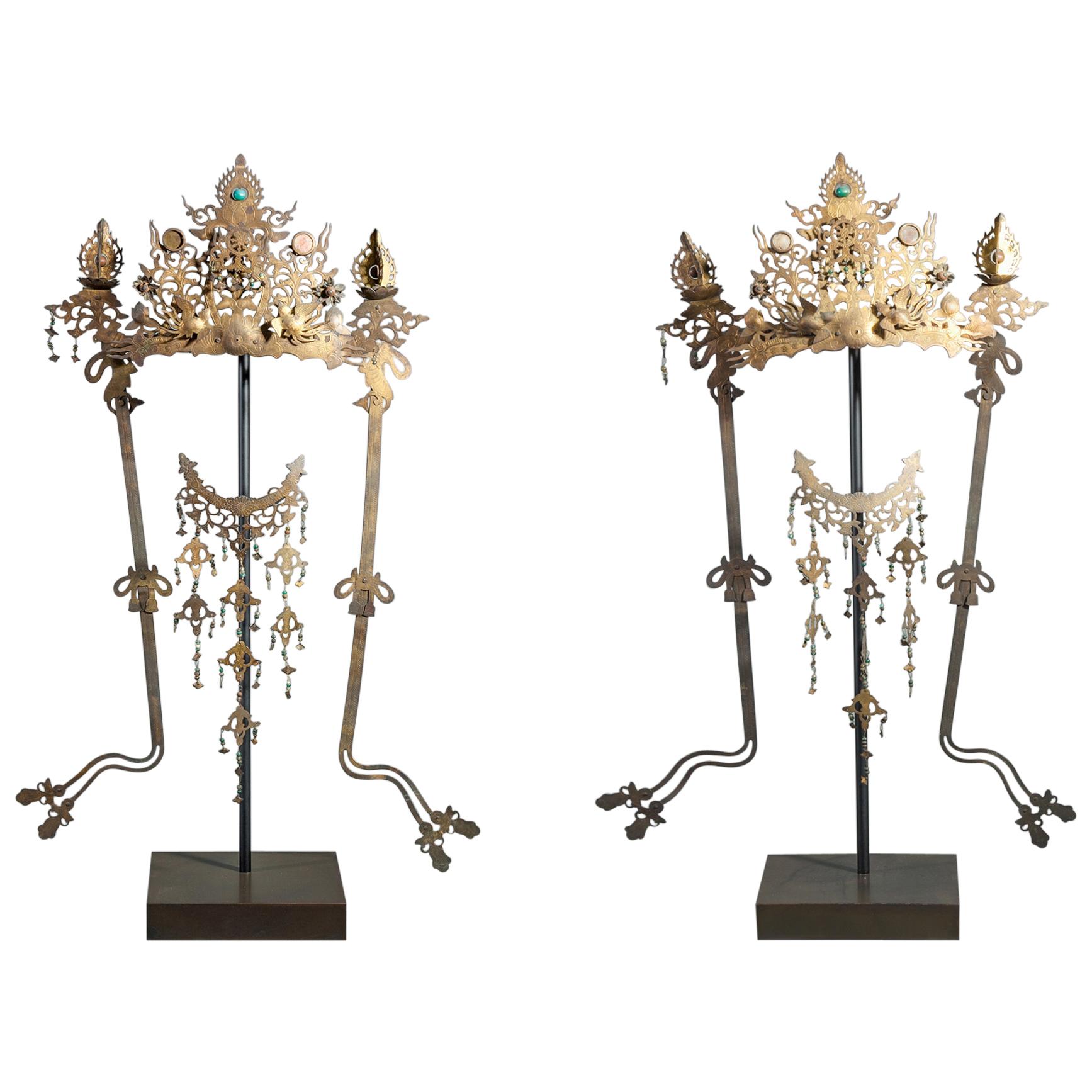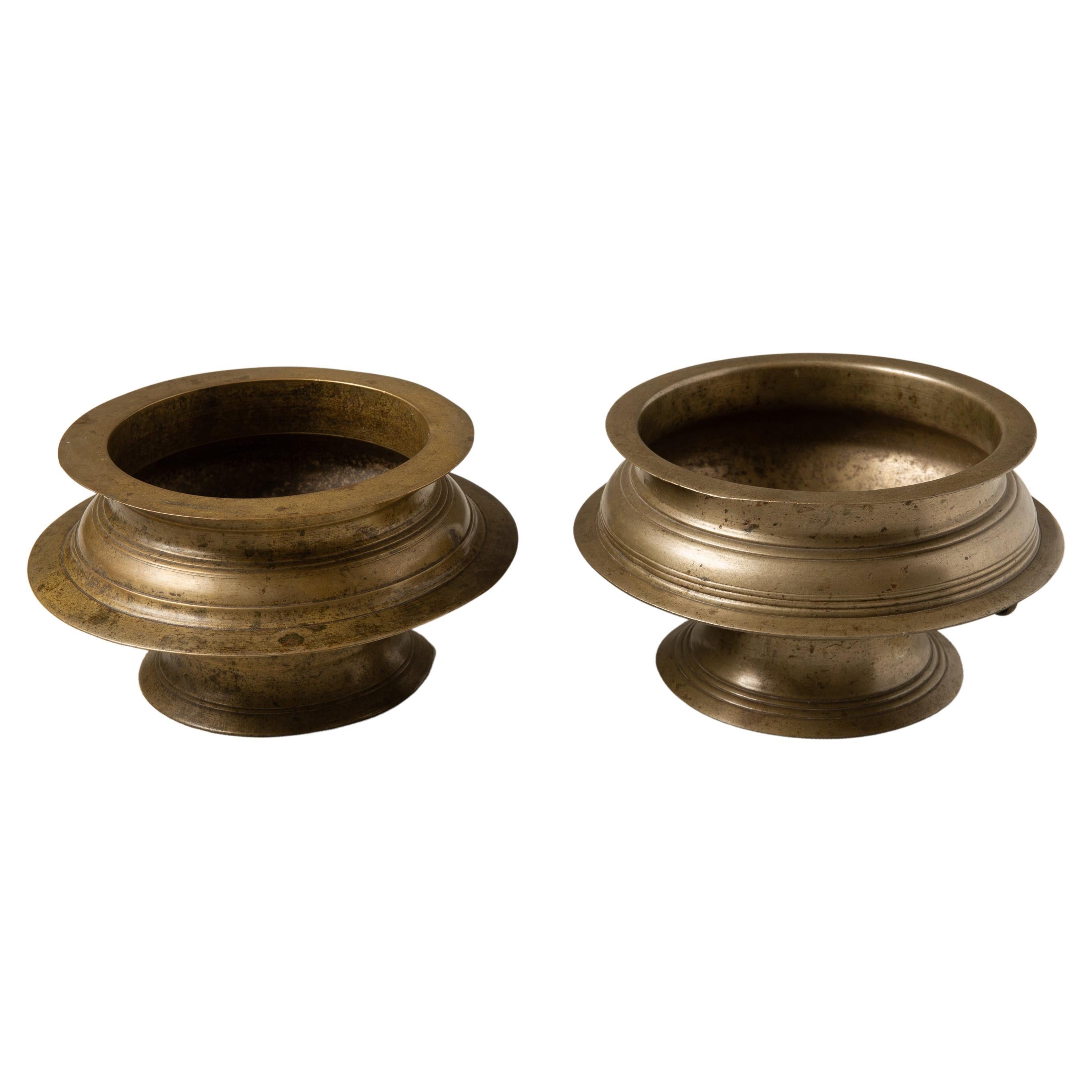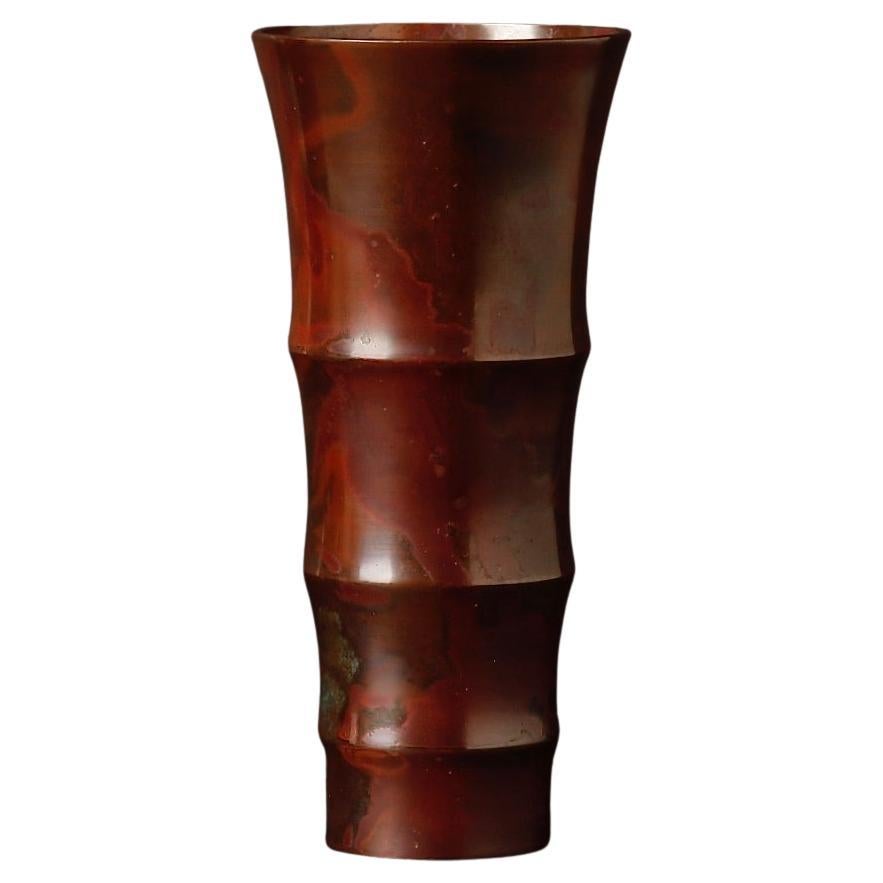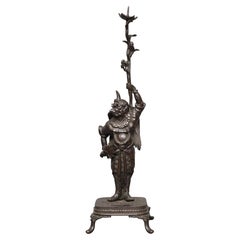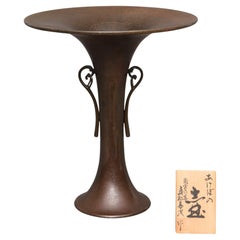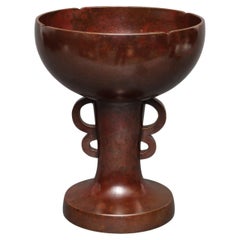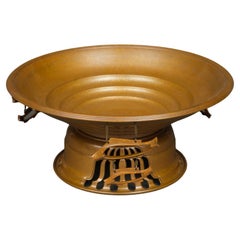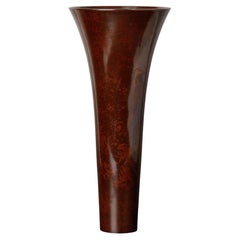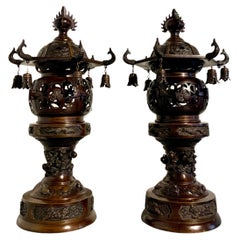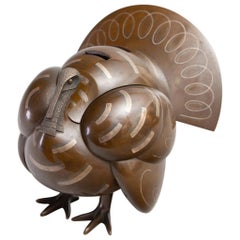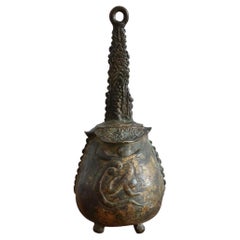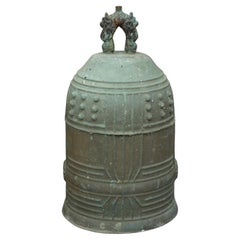
Heavy, Japanese bronze temple bell 梵鐘 (bonshô) of traditional shape
View Similar Items
Want more images or videos?
Request additional images or videos from the seller
1 of 14
Heavy, Japanese bronze temple bell 梵鐘 (bonshô) of traditional shape
$2,952.94List Price
About the Item
- Dimensions:Height: 19.69 in (50 cm)Diameter: 11.42 in (29 cm)
- Materials and Techniques:Bronze,Cast
- Place of Origin:
- Period:
- Date of Manufacture:Late Meiji period/Taishô period
- Condition:Wear consistent with age and use. In a very good original condition with minimal traces of wear conform age. Traces of red and brique coloured paint spatters. Please look at the photos for a condition reference.
- Seller Location:Amsterdam, NL
- Reference Number:Seller: C11541stDibs: LU7165242258892
About the Seller
4.8
Vetted Professional Seller
Every seller passes strict standards for authenticity and reliability
Established in 1996
1stDibs seller since 2022
22 sales on 1stDibs
Typical response time: 22 hours
Authenticity Guarantee
In the unlikely event there’s an issue with an item’s authenticity, contact us within 1 year for a full refund. DetailsMoney-Back Guarantee
If your item is not as described, is damaged in transit, or does not arrive, contact us within 7 days for a full refund. Details24-Hour Cancellation
You have a 24-hour grace period in which to reconsider your purchase, with no questions asked.Vetted Professional Sellers
Our world-class sellers must adhere to strict standards for service and quality, maintaining the integrity of our listings.Price-Match Guarantee
If you find that a seller listed the same item for a lower price elsewhere, we’ll match it.Trusted Global Delivery
Our best-in-class carrier network provides specialized shipping options worldwide, including custom delivery.More From This Seller
View AllJapanese Bronze Okimono of a 'Karasu Tengu' 鴉天狗 Holding Up a Flower Branch
Located in Amsterdam, NL
Very refined Japanese bronze figure of a ‘karasu tengu’ holding a candlestick.
Well cast as a tengu in half-human, half-bird form standing atop a pile of leaves on a rounded square ...
Category
Antique Late 19th Century Japanese Metalwork
Materials
Bronze
Japanese Patinated Bronze Trumpet Vase by Kanaya Gorôsaburô XI 金谷五良三郎
By Kanaya Gorôsaburô XI 金谷五良三郎
Located in Amsterdam, NL
Elegant brown patinated bronze trumpet vase with gold and red sprinkled design. It has an impressive broad outward curved mouth decorated on both sides with the dots. Its slender bod...
Category
Early 20th Century Japanese Metalwork
Materials
Bronze
Japanese Red Patinated Bronze Vase by Nakajima Yasumi II 二代中島保美
By Nakajima Yasumi II
Located in Amsterdam, NL
Exceptionally shaped bronze vase with a striking ‘coarse’-textured red mottled patina. The bowl subtly shaped like a flower, its slightly concave body flanked by ‘butterfly wing’-sha...
Category
20th Century Japanese Metalwork
Materials
Bronze
Large Japanese patinated bronze footed water basin (suiban) by Studio Heiwa 平和堂
Located in Amsterdam, NL
Large and heavy Japanese light brown patinated bronze footed water basin (suiban) with a mottled golden motif. The bowl with stepped concave rings and a n...
Category
Early 20th Century Japanese Metalwork
Materials
Bronze
Pair of Japanese Carved Wooden Temple Ornaments 木鼻 'Kibana' Shaped like Baku 獏
Located in Amsterdam, NL
A lovely pair of very detailed carved wooden temple ornaments (kibana) in the shape of elephant-like mythical creatures known as ‘Baku’.
Baku are Japan...
Category
Antique Early 19th Century Japanese Sculptures and Carvings
Materials
Wood
$3,779 / set
Free Shipping
Pair of Japanese kakejiku 掛け軸 (hanging scrolls) depicting Niô guardians 仁王
Located in Amsterdam, NL
Pair of impressive, antique kakejiku (hanging scrolls) showcasing the awe-inspiring Niô guardians, also referred to as heavenly kings.
Each painting cap...
Category
Antique Early 18th Century Japanese Paintings and Screens
Materials
Brocade, Silk, Paint
$16,536 / set
Free Shipping
You May Also Like
Japanese Beautiful Shape Bronze Vase
Located in Fukuoka, JP
Japanese Beautiful Shape Bronze Vase
Category
20th Century Japanese Metalwork
Materials
Bronze
Pair Japanese Bronze Pagoda Temple Lanterns, Taisho Period, circa 1920, Japan
Located in Austin, TX
An elegant pair of Japanese cast and lacquered bronze pagoda lanterns, Taisho Period, circa 1920, Japan.
The lanterns a true pair, with mirrored decorations and lantern doors opening in opposite directions. The lanterns of traditional toro form, cast in bronze, and lacquered. Each lantern comprised of three parts - the "roof", the "fire box", and the pedestal. This type of pedestal lantern is called a dai-doro, as opposed to the hanging lantern type, tsuri-doro.
The hexagonal roof of the lantern, reminiscent of temples or pagodas, features a wonderful, dense cloud pattern with three heart-shaped cutouts, known as inome, or boar's eye. The roof topped by a hoju, the Buddhist flaming Jewel of Wisdom. Each of the six corners feature a fantastic shachihoko, mythical beasts with the face of a tiger and body of a fish. Bells are suspended from the shachihoko.
The globular body of the lantern features four pierced panels with the three leaf hollyhock mon of the Tokugawa clan surrounded by a karakusa pattern of scrolling vines. One panel serving as a hinged door with a lock stylized as the Three Jewels...
Category
Vintage 1920s Japanese Taisho Lanterns
Materials
Bronze
Japanese Bronze Koro ‘Incense Burner’ in the Shape of a Turkey
Located in Hudson, NY
Meiji period (1868-1912) bronze, with removable top, stylized geometric shape and silver inlay. Signature reads: Miharu Kadayashi.
Category
Early 20th Century Japanese Meiji Metalwork
Materials
Silver, Bronze
Chinese Antique Casting Handbell Made of Copper Alloy / Temple Bell
Located in Sammu-shi, Chiba
A Chinese antique handbell made of copper alloy.
I think it is from the late Qing dynasty to the end of the Qing dynasty.
Although it is a casting, ...
Category
Antique 19th Century Chinese Qing Metalwork
Materials
Brass, Bronze
19th Century Burmese Bronze Temple Bell with Hardwood Stand, Large Scale
Located in Stamford, CT
19th century Burmese bronze temple bell with original carved hardwood stand, painted iron hanging bracket, and striker. This rare large scale cast bronze bell has a splendid sculptural and spiritual presence.
The bell has a long inscription on the upper part. The offering of a bronze bell to a monastery or temple was considered second only to the offering of a Buddha image as an act of merit (kutho).
Such bells were cast using the lost wax (cire perdue) method. Casting of such bells was auspicious with specific rituals being performed by the caster and sponsors to ensure the appropriate blessings.
The bell here, as with all such Burmese bells...
Category
Antique Mid-19th Century Burmese Tibetan Metalwork
Materials
Bronze, Iron
Bronze Koro 'Japanese Incense Burner' in the Shape of a Rooster
Located in Hudson, NY
Bronze Koro (Japanese incense burner) in the shape of a rooster
Removable top.
Category
Antique Early 19th Century Japanese Metalwork
Materials
Bronze
